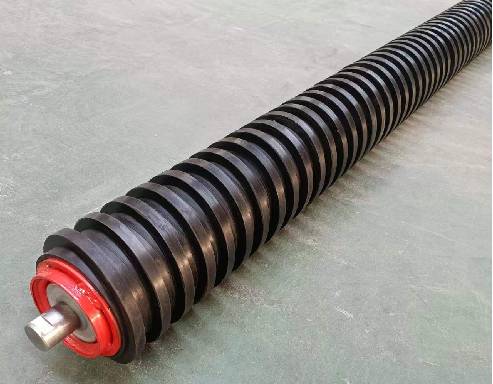 Afrikaans
Afrikaans  Albanian
Albanian  Amharic
Amharic  Arabic
Arabic  Armenian
Armenian  Azerbaijani
Azerbaijani  Basque
Basque  Belarusian
Belarusian  Bengali
Bengali  Bosnian
Bosnian  Bulgarian
Bulgarian  Catalan
Catalan  Cebuano
Cebuano  Corsican
Corsican  Croatian
Croatian  Czech
Czech  Danish
Danish  Dutch
Dutch  English
English  Esperanto
Esperanto  Estonian
Estonian  Finnish
Finnish  French
French  Frisian
Frisian  Galician
Galician  Georgian
Georgian  German
German  Greek
Greek  Gujarati
Gujarati  Haitian Creole
Haitian Creole  hausa
hausa  hawaiian
hawaiian  Hebrew
Hebrew  Hindi
Hindi  Miao
Miao  Hungarian
Hungarian  Icelandic
Icelandic  igbo
igbo  Indonesian
Indonesian  irish
irish  Italian
Italian  Japanese
Japanese  Javanese
Javanese  Kannada
Kannada  kazakh
kazakh  Khmer
Khmer  Rwandese
Rwandese  Korean
Korean  Kurdish
Kurdish  Kyrgyz
Kyrgyz  Lao
Lao  Latin
Latin  Latvian
Latvian  Lithuanian
Lithuanian  Luxembourgish
Luxembourgish  Macedonian
Macedonian  Malgashi
Malgashi  Malay
Malay  Malayalam
Malayalam  Maltese
Maltese  Maori
Maori  Marathi
Marathi  Mongolian
Mongolian  Myanmar
Myanmar  Nepali
Nepali  Norwegian
Norwegian  Norwegian
Norwegian  Occitan
Occitan  Pashto
Pashto  Persian
Persian  Polish
Polish  Portuguese
Portuguese  Punjabi
Punjabi  Romanian
Romanian  Russian
Russian  Samoan
Samoan  Scottish Gaelic
Scottish Gaelic  Serbian
Serbian  Sesotho
Sesotho  Shona
Shona  Sindhi
Sindhi  Sinhala
Sinhala  Slovak
Slovak  Slovenian
Slovenian  Somali
Somali  Spanish
Spanish  Sundanese
Sundanese  Swahili
Swahili  Swedish
Swedish  Tagalog
Tagalog  Tajik
Tajik  Tamil
Tamil  Tatar
Tatar  Telugu
Telugu  Thai
Thai  Turkish
Turkish  Turkmen
Turkmen  Ukrainian
Ukrainian  Urdu
Urdu  Uighur
Uighur  Uzbek
Uzbek  Vietnamese
Vietnamese  Welsh
Welsh  Bantu
Bantu  Yiddish
Yiddish  Yoruba
Yoruba  Zulu
Zulu herringbone rubber lagging
Herringbone Rubber Lagging Enhancing Industrial Efficiency
In the realm of industrial operation, particularly in sectors like mining, construction, and manufacturing, the efficiency and longevity of machinery play a crucial role. One key component that significantly enhances the performance of equipment such as conveyor systems is herringbone rubber lagging. This specialized material not only improves the operational efficiency of machinery but also contributes to its durability, making it an essential choice for many industries.
What is Herringbone Rubber Lagging?
Herringbone rubber lagging is a type of rubber lining pattern that resembles a fishbone or herringbone design. This unique pattern is engineered to optimize traction and is often applied to the drums of conveyor systems, idlers, and pulleys. The herringbone design creates grooves that provide better grip, reducing slippage and ensuring that materials are transported smoothly and consistently.
Benefits of Herringbone Rubber Lagging
1. Increased Traction One of the primary benefits of herringbone rubber lagging is its ability to provide superior traction. The raised patterns create more surface area, resulting in a better grip on materials being conveyed. This is particularly important in environments where loose, heavy, or wet materials may otherwise lead to slippage.
2. Durability Rubber is inherently resistant to wear and tear, and when designed in a herringbone pattern, it distributes weight and impact more evenly across the surface. This durability translates into longer service life for conveyor belts and drum systems, reducing the need for frequent replacements and lowering maintenance costs.
herringbone rubber lagging

3. Noise Reduction Operations involving heavy machinery can often be loud and disruptive. Herringbone rubber lagging acts as a sound-dampening material. Its flexible properties absorb vibrations, leading to a quieter working environment, which can enhance safety and comfort for workers.
4. Chemical Resistance In many industrial processes, exposure to chemicals is a common concern. Herringbone rubber lagging can be engineered to withstand a variety of chemicals, oils, and abrasives, making it suitable for use in diverse industries, including food processing, mining, and chemical manufacturing.
5. Enhanced Material Flow The design of herringbone rubber lagging not only increases traction but also aids in the movement of materials along the conveyor. The pattern helps to channel materials effectively, minimizing the risk of blockages and ensuring a smoother flow.
Applications Across Industries
Herringbone rubber lagging is utilized in numerous sectors. In mining, for example, it provides critical support for transporting heavy ores. In construction, it is used on equipment that moves aggregates and other materials. The food industry also leverages herringbone lagging for conveyors that transport food products, as it meets hygienic standards and prevents contamination.
Conclusion
In conclusion, herringbone rubber lagging represents an innovative solution for improving the efficiency and reliability of industrial machinery. With its unique design providing enhanced traction, durability, and noise reduction, it serves as a vital component in various applications across multiple industries. Businesses investing in herringbone rubber lagging can expect not only improved operational performance but also significant cost savings in maintenance and equipment longevity. As industries continue to evolve, adopting such advanced materials will be key to maintaining competitiveness in an increasingly demanding market.
-
Revolutionizing Conveyor Reliability with Advanced Rubber Lagging PulleysNewsJul.22,2025
-
Powering Precision and Durability with Expert Manufacturers of Conveyor ComponentsNewsJul.22,2025
-
Optimizing Conveyor Systems with Advanced Conveyor AccessoriesNewsJul.22,2025
-
Maximize Conveyor Efficiency with Quality Conveyor Idler PulleysNewsJul.22,2025
-
Future-Proof Your Conveyor System with High-Performance Polyurethane RollerNewsJul.22,2025
-
Driving Efficiency Forward with Quality Idlers and RollersNewsJul.22,2025





























